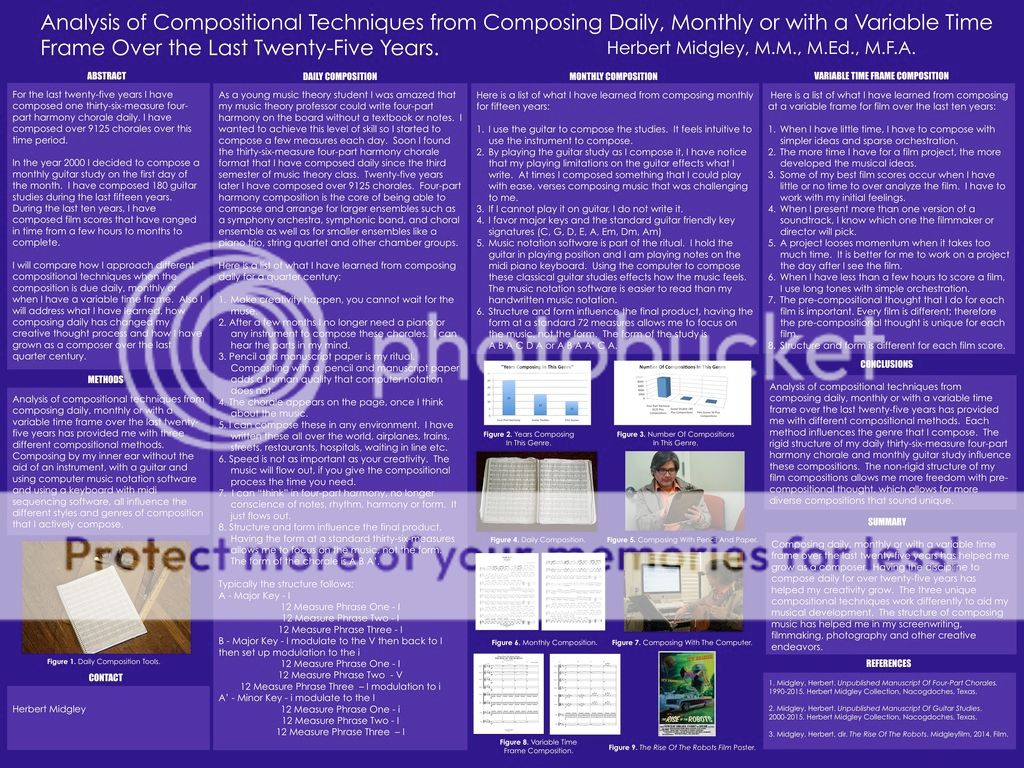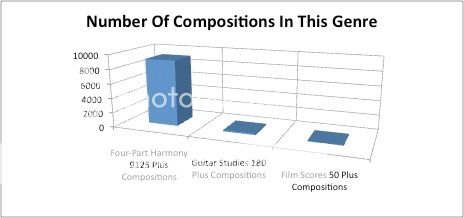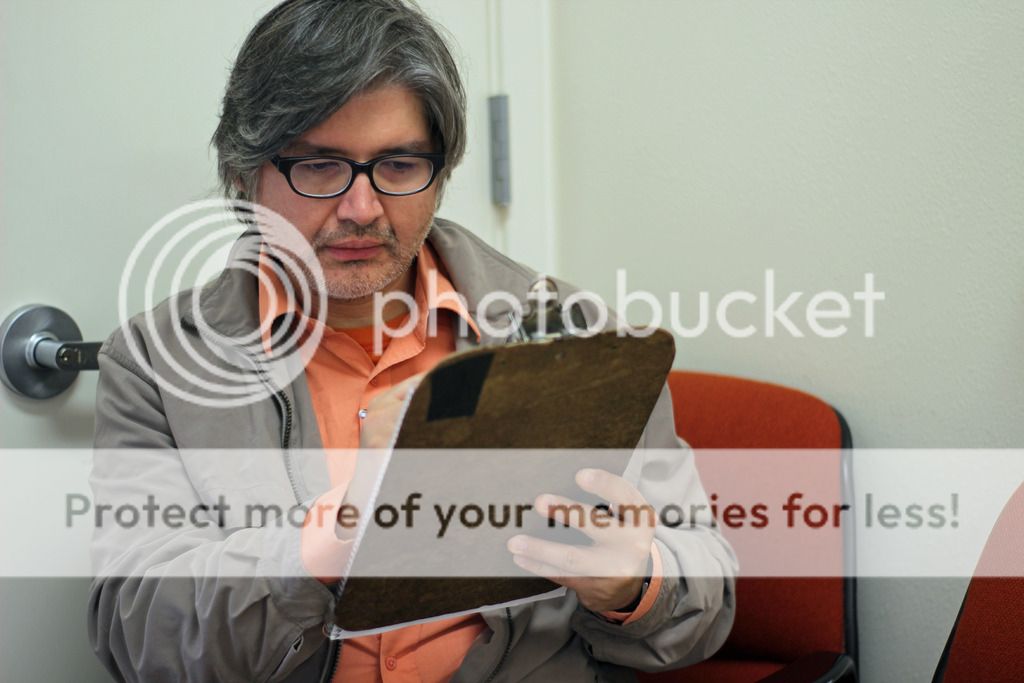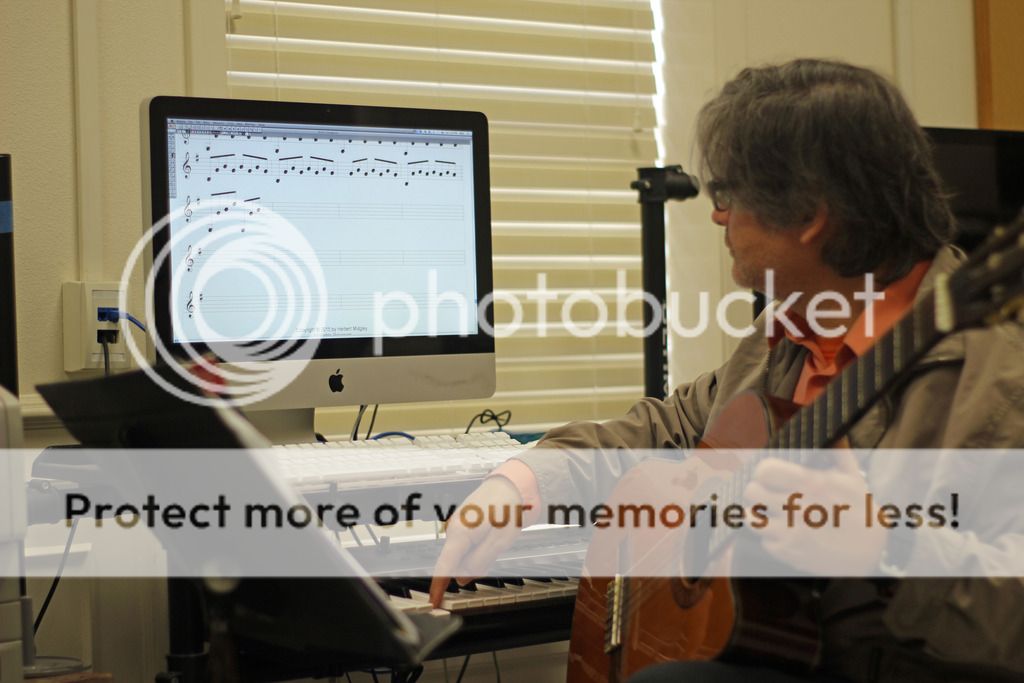Analysis of Compositional Techniques from Composing Daily, Monthly or with a Variable Time Frame Over the Last Twenty-Five Years.
Herbert Midgley, M.M., M.Ed., M.F.A.
ABSTRACT
For the last twenty-five years I have composed one thirty-six-measure four-part harmony chorale daily. I have composed over 9125 chorales over this time period.
In the year 2000 I decided to compose a monthly guitar study on the first day of the month. I have composed 180 guitar studies during the last fifteen years. During the last ten years, I have composed film scores that have ranged in time from a few hours to months to complete.
I will compare how I approach different compositional techniques when the composition is due daily, monthly or when I have a variable time frame. Also I will address what I have learned, how composing daily has changed my creative thought process and how I have grown as a composer over the last quarter century.
METHODS
Analysis of compositional techniques from composing daily, monthly or with a variable time frame over the last twenty-five years has provided me with three different compositional methods. Composing by my inner ear without the aid of an instrument, with a guitar and using computer music notation software and using a keyboard with midi sequencing software, all influence the different styles and genres of composition that I actively compose.
DAILY COMPOSITION
As a young music theory student I was amazed that my music theory professor could write four-part harmony on the board without a textbook or notes. I wanted to achieve this level of skill so I started to compose a few measures each day. Soon I found the thirty-six-measure four-part harmony chorale format that I have composed daily since the third semester of music theory class. Twenty-five years later I have composed over 9125 chorales. Four-part harmony composition is the core of being able to compose and arrange for larger ensembles such as a symphony orchestra, symphonic band, and choral ensemble as well as for smaller ensembles like a piano trio, string quartet and other chamber groups.
Here is a list of what I have learned from composing daily for a quarter century:
1. Make creativity happen, you cannot wait for the muse.
2. After a few months I no longer need a piano or any instrument to compose these chorales. I can hear the parts in my mind.
3. Pencil and manuscript paper is my ritual. Compositing with a pencil and manuscript paper adds a human quality that computer notation does not.
4. The chorale appears on the page, once I think about the music.
5. I can compose these in any environment. I have written these all over the world, airplanes, trains, streets, restaurants, hospitals, waiting in line etc.
6. Speed is not as important as your creativity. The music will flow out, if you give the compositional process the time you need.
7. I can “think” in four-part harmony, no longer conscience of notes, rhythm, harmony or form. It just flows out.
8. Structure and form influence the final product. Having the form at a standard thirty-six-measures allows me to focus on the music, not the form. The form of the chorale is A B A’.
Typically the structure follows:
A - Major Key - I
12 Measure Phrase One - I
12 Measure Phrase Two - I
12 Measure Phrase Three - I
B - Major Key - I modulate to the V then back to I then set up modulation to the i
12 Measure Phrase One - I
12 Measure Phrase Two - V
12 Measure Phrase Three – I modulation to i
A’ - Minor Key - i modulate to the I
12 Measure Phrase One - i
12 Measure Phrase Two - I
12 Measure Phrase Three – I
MONTHLY COMPOSITION
Playing guitar had a major influence in my musical career. Guitar is one of those instruments that you need to play to compose for it. In the thirty years of playing guitar, I have composed in many genres. In the year 2000 I decided to compose a monthly classical guitar study on the first day of the month. I have composed 180 guitar studies during the last fifteen years.
Here is a list of what I have learned from composing monthly for fifteen years:
1. I use the guitar to compose the studies. It feels intuitive to use the instrument to compose.
2. By playing the guitar study as I compose it, I have notice that my playing limitations on the guitar effects what I write. At times I composed something that I could play with ease, verses composing music that was challenging to me.
3. If I cannot play it on guitar, I do not write it.
4. I favor major keys and the standard guitar friendly key signatures (C, G, D, E, A, Em, Dm, Am).
5. Music notation software is part of the ritual. I hold the guitar in playing position and I am playing notes on the midi piano keyboard. Using the computer to compose these classical guitar studies effects how the music feels. The music notation software is easier to read than my handwritten music notation.
6. Structure and form influence the final product, having the form at a standard 72 measures allows me to focus on the music, not the form. The form of the study is
A B A C D A or A B A A’ C A.
A B A C D A or A B A A’ C A.
VARIABLE TIME FRAME COMPOSITION
As a young composer, I wanted to write music for film. During the last ten years, I have composed film scores that have taken from hours to months to complete. Since I am an active independent filmmaker with an M.F.A. in cinematography, I have many colleagues who need soundtracks. They typically request these compositions as fast as I can compose them.
Here is a list of what I have learned from composing at a variable frame for film over the last ten years:
1. When I have little time, I have to compose with simpler ideas and sparse orchestration.
2. The more time I have for a film project, the more developed the musical ideas.
3. Some of my best film scores occur when I have little or no time to over analyze the film. I have to work with my initial feelings.
4. When I present more than one version of a soundtrack, I know which one the filmmaker or director will pick.
5. A project looses momentum when it takes too much time. It is better for me to work on a project the day after I see the film.
6. When I have less than a few hours to score a film, I use long tones with simple orchestration.
7. The pre-compositional thought that I do for each film is important. Every film is different; therefore the pre-compositional thought is unique for each film.
8. Structure and form is different for each film score.
CONCLUSIONS
Analysis of compositional techniques from composing daily, monthly or with a variable time frame over the last twenty-five years has provided me with different compositional methods. Each method influences the genre that I compose. The rigid structure of my daily thirty-six-measure four-part harmony chorale and monthly guitar study influence these compositions. The non-rigid structure of my film compositions allows me more freedom with pre-compositional thought, which allows for more diverse compositions that sound unique.
SUMMARY
Composing daily, monthly or with a variable time frame over the last twenty-five years has helped me grow as a composer. Having the discipline to compose daily for over twenty-five years has helped my creativity grow. The three unique compositional techniques work differently to aid my musical development. The structure of composing music has helped me in my screenwriting, filmmaking, photography and other creative endeavors.
REFERENCES
1. Midgley, Herbert. Unpublished Manuscript Of Four-Part Chorales.1990-2015. Herbert Midgley Collection, Nacogdoches, Texas.
2. Midgley, Herbert. Unpublished Manuscript Of Guitar Studies. 2000-2015. Herbert Midgley Collection, Nacogdoches, Texas.
3. Midgley, Herbert, dir. The Rise Of The Robots. Midgleyfilm, 2014. Film.
Figure 1. Daily Composition Tools.
Figure 2. Years Composing In This Genre.
Figure 3. Number Of Compositions In This Genre.
Figure 4. Daily Composition.
Figure 5. Composing With Pencil And Paper.
Figure 6. Monthly Composition.
Figure 7. Composing With The Computer.
Figure 8. Variable Time Frame Composition.
Figure 9. The Rise Of The Robots Film Poster.

Here I am talking about this poster.













No comments:
Post a Comment